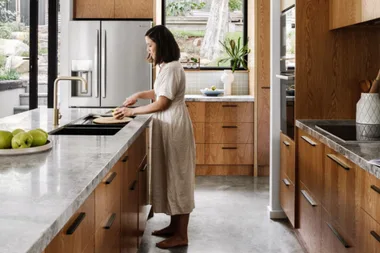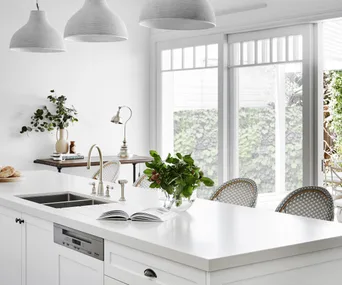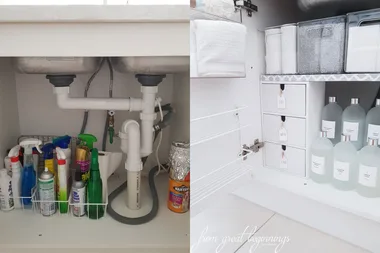If you’ve fallen in love with a ceramic butler’s sink you’re not alone. Once the domain of a farmhouse or back kitchen and used only by servants, ceramic butler’s sinks are now one of the most sought-after items to form a statement piece in contemporary kitchens.
For passionate cooks and kitchen lovers, the soft curves and clean, crisp finish lend a classic look to any style of kitchen, from contemporary farmhouse to classic Hamptons and even industrial chic.
Before you decide on the best sink for your household, there are some properties of clay sinks to take into consideration if you’re used to a stainless steel sink. If you’re asking yourself is ceramic a good material for sinks, here are the pros and cons to look out for.

Butler’s sinks are enjoying a renaissance, along with butler’s pantries as seen in this light and bright modern farmhouse.
(Credit: Photographer: Louise Roche | Stylist: Kylie Jackes)Do ceramic sinks crack easily?
If you’re after added durability, choose a butler’s sink made from the very solid fireclay, a reinforced ceramic clay that is stronger and more durable than porcelain or standard ceramic. Fireclay is very heavy – constructed from ground, pre-fired clay mixed with wet clay and water which makes it heat-resistant, impact-resistant and easy care.
Fireclay sinks are also chemical-resistant due to the heavy-duty glazed surface. This also renders the surface hypoallergenic and makes them resistant to chips and scratches. This coating is compromised if a chip or scratch does occur.
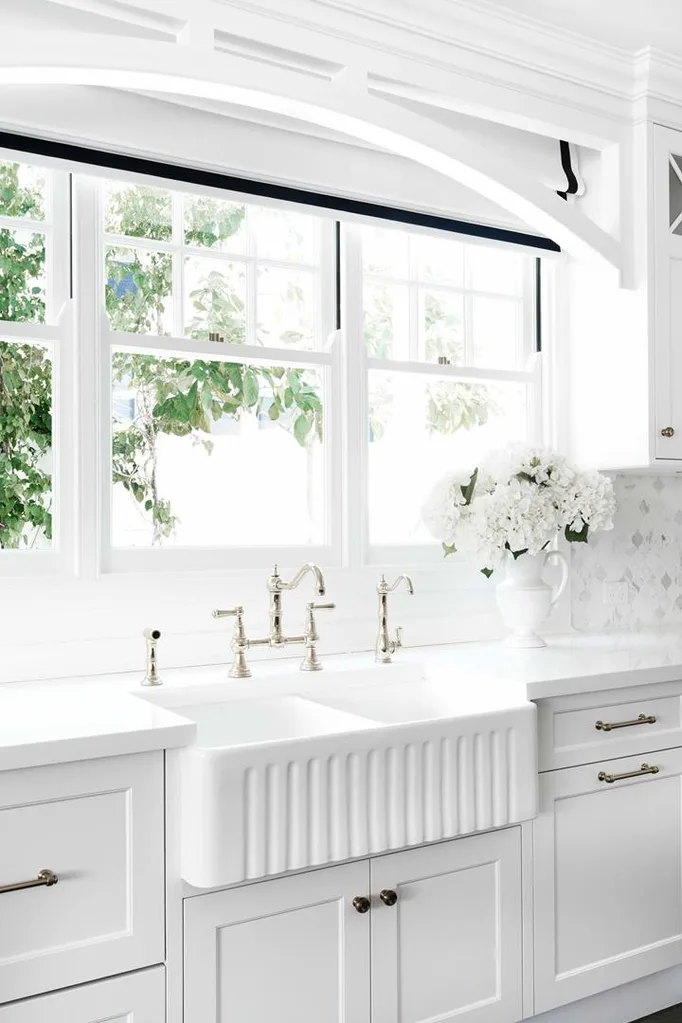
A fluted ceramic sink adds texture and interest in this all-white Hamptons style kitchen.
(Credit: Photographer: Louise Roche | Stylist: Kylie Jackes)What is better? A porcelain or ceramic sink?
Some butler’s sinks are made from porcelain, which is not as hard-wearing as fireclay and more prone to damage and stains, however less expensive to buy.
Working in a kitchen with a ceramic sink takes some adjustment – you’re no longer able to simply throw things into the sink and let them pile up. A more careful approach is needed than with a stainless steel sink to avoid chips, breakages and stains.
The lack of a draining board alongside the sink seems to be less of an issue in modern kitchen designs, however, it’s important to be realistic about the daily washing up load. For handwashing and bulky items that don’t go into the dishwasher, a practical drying alternative needs to be sought, either set in the benchtop itself, or with a free-standing dish drainer. Do your research.
Filling your ceramic sink
Size matters. Modelled on the original farmhouse style, where sinks were filled by carting water from a remote source, butler’s sinks are generally much wider and deeper than standard sinks. Because of this, they take longer to fill deep enough to submerge a cooking pot, so it pays to be aware of the environmental impact of filling your ceramic sink to suit your daily needs.
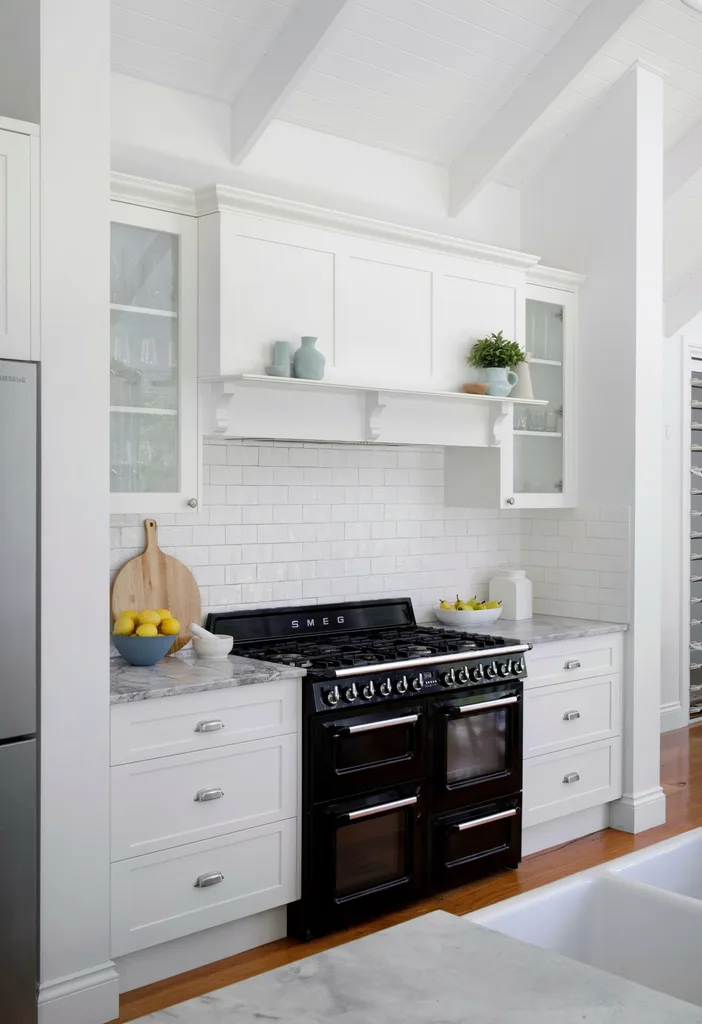
This contemporary farmhouse kitchen features a split ceramic sink which saves on time and water when filling.
(Credit: Photographer: John Downs | Stylist: Kylie Jackes)Fitting a ceramic sink into your kitchen
The choice is yours whether to position your ceramic sink set-in to the benchtop – leaving the rim sitting proud of the surface; under-mounted – with the surrounding benchtop extending right over the edges of your sink; or cut in around three sides – leaving the front of your sink exposed.
Rather than simply buying something off the shelf as standard, due to their size and weight, consider enlisting the help of a professional cabinetmaker build your ceramic sink into your kitchen cabinetry.
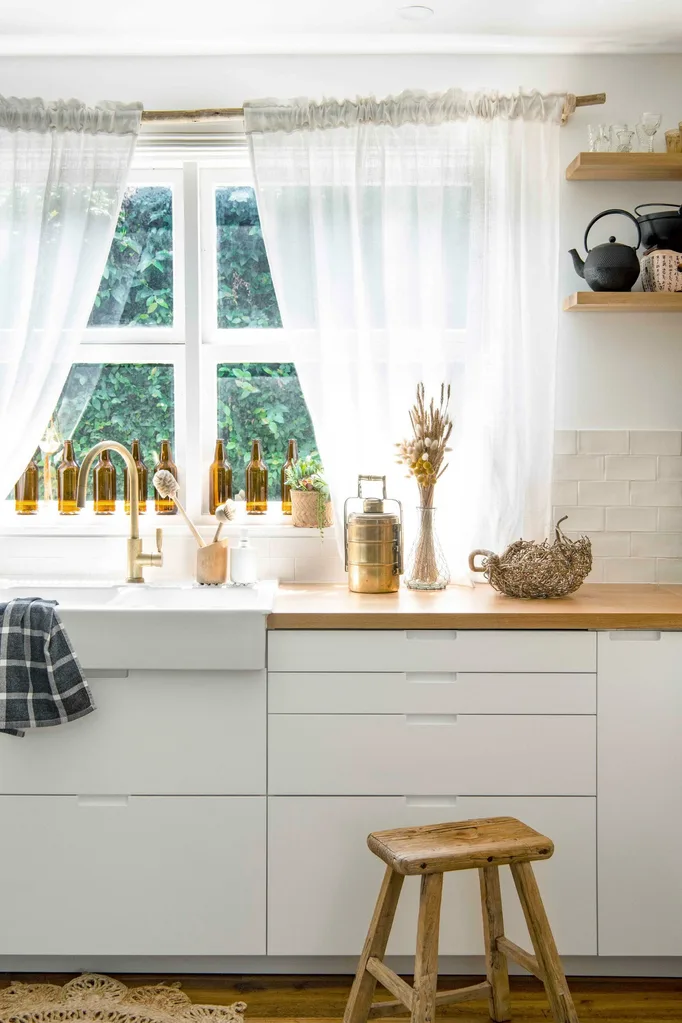
An under-mounted sink allows for sleek surfaces right to the edge of your ceramic sink, whereas in this eclectic cottage kitchen the shapely form sits above the timber benchtop.
(Credit: Photographer: Brigid Arnott | Stylist: Lisa Hilton)Are ceramic sinks hard to clean?
Cleaning your butler’s sink is usually required more frequently as marks and stains show up plainly against the white surface. Fireclay sinks are dirt- and stain-resistant so generally easy to keep clean, however, if a sparkling white sink is essential to your sense of daily order, simply keep a tub of Gumption handy or routinely give it a quick scrub with a paste of bicarb soda and lemon.
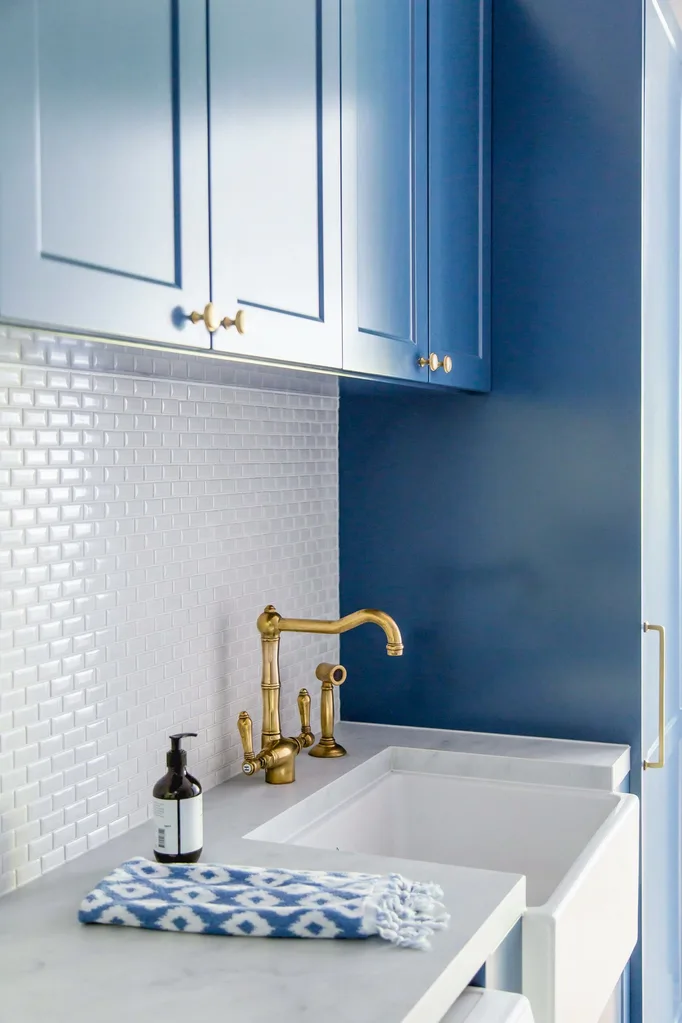
If you love the look but have concerns about the wear and tear of a ceramic sink, why not put one in your laundry like this Hamptons style home?
(Credit: Photographer: Suzi Appel | Stylist: Beckie Littler)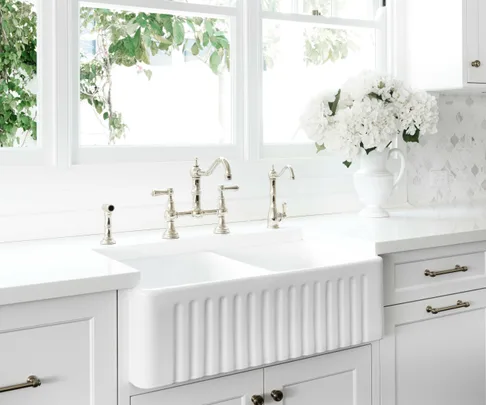 Louise Roche
Louise Roche


